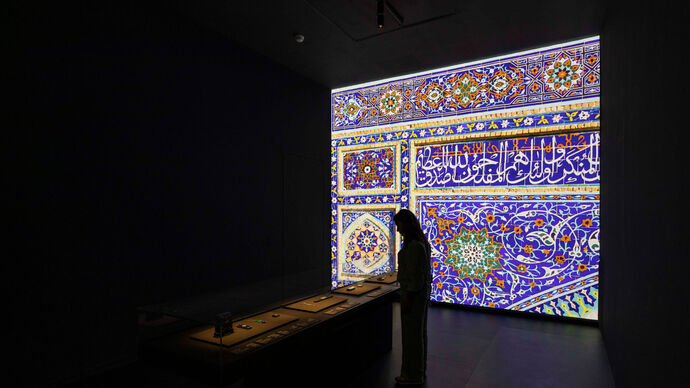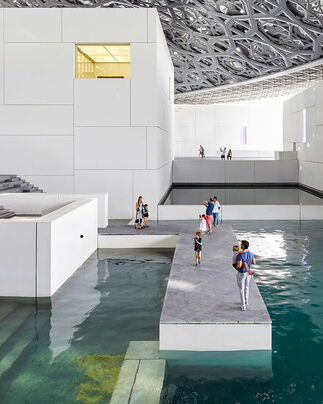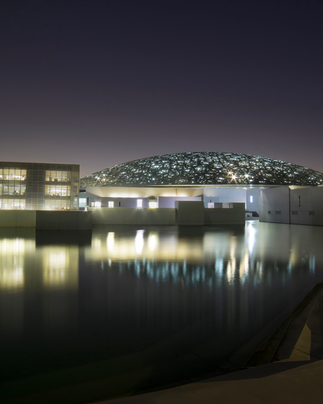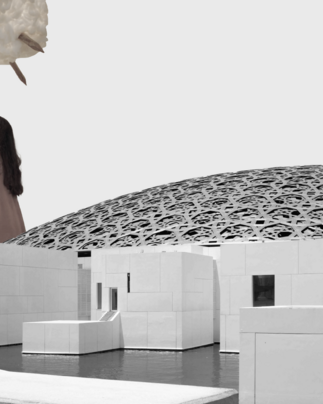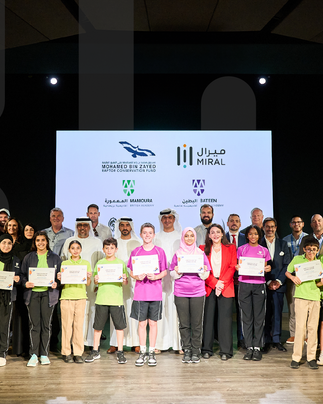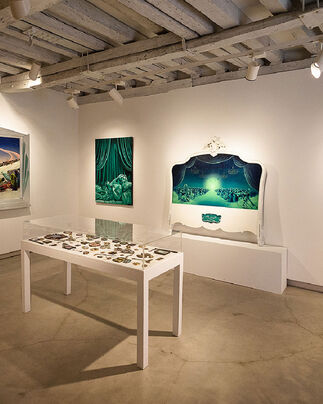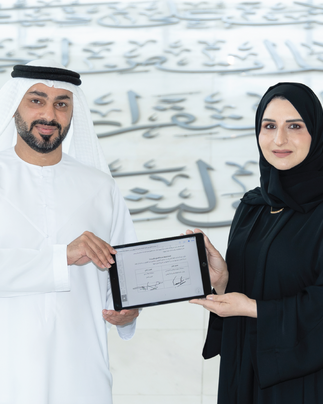Louvre Abu Dhabi will present Cartier, Islamic Inspiration and Modern Design, a ground-breaking exhibition, from 16 November 2023 until 24 March 2024. Jointly organised by Louvre Abu Dhabi, Musée des Arts Décoratifs, Musée du Louvre and France Muséums, with the support of Maison Cartier, the exhibition will explore the influence of the Islamic arts on Cartier’s design from the beginning of the 20th century to the present day.
Cartier, Islamic Inspiration and Modern Design is co-curated by Judith Henon-Raynaud, Chief Curator and Deputy Director of the Department of Islamic Art at the Musée du Louvre and Évelyne Possémé, Former Chief Curator of Ancient and Modern Jewellery at the Musée des Arts Décoratifs. It is based on the exhibition Cartier and Islamic Art: In Search of Modernity (Paris-Dallas 2021-2022), conceived and co-organised by the Dallas Museum of Art and the Musée des Arts Décoratifs, with the exceptional collaboration of the Musée du Louvre and the support of Maison Cartier, curated by Heather Ecker, Judith Henon-Raynaud, Evelyne Possémé and Sarah Schleuning.
At the turn of the 20th century, Europe was becoming increasingly fascinated with Islamic art, as witnessed by the growing art market, academic research and dedicated exhibitions that facilitated the introduction of Middle Eastern and South Asian artistic traditions to European audiences.
Louis Cartier, grandson of the founder of the Maison, was deeply intrigued by these artistic traditions that he discovered in Parisian libraries and that eventually led him into gathering a significant collection of Islamic art and encouraging a modern aesthetic in the Maison’s creations as early as 1904. In 1911, his brother Jacques Cartier travelled to the Arabian Gulf region to observe the pearl market and also to India to study the precious stones market, bringing back ancient and contemporary jewels that would profoundly influence the Maison for years to come, right up to the artistic direction of Jeanne Toussaint.
The exhibition’s chapters take the visitor on a journey exploring the jewellers’ sources of inspiration and their creative process through over 400 objects from the collections of Louvre Abu Dhabi, Musée des Arts Décoratifs, Musée du Louvre, Cartier, as well as exceptional loans from Petit Palais, Musée des Beaux-Arts de la ville de Paris and other lenders, including masterpieces of Islamic art, fine jewellery, drawings, design sketches, miniatures, textiles, photographs and archival material.
Manuel Rabaté, Director of Louvre Abu Dhabi, said: “The Cartier, Islamic Inspiration and Modern Design exhibition at Louvre Abu Dhabi is testament to a longstanding and successful partnership between our institution and Cartier. Our mission to tell stories of cultural connections that transcend time, civilisations, and geographies aligns with Cartier’s commitment to building cultural bridges and is exquisitely reflected in this captivating showcase of Islamic design.
“As the first universal museum in the Arab World, Louvre Abu Dhabi has always sought to broaden our visitors’ perspectives by bringing unique art and cultural experiences to Abu Dhabi. During this exhibition, our visitors will not only be able to discover new connections between cultures and gain a better understanding of modernity, but they will also be inspired by the rich technicalities and unique materials of Islamic art, architecture, and Cartier jewellery on display.”
The curators of the exhibition, Judith Henon-Reynaud and Évelyne Possémé, said: “This exhibition is the result of almost five years of research of archives, drawings and photographs to discover the links between Cartier creations and Islamic arts, and to identify the sources of inspiration. The result is a true immersion into the creative process and a journey through the influences that helped inspire some of the most innovative pieces in French jewellery. The exhibition showcases how important the discovery of Islamic art was for artists at the start of the 20th century, and how this aesthetic influence led to the production of a large number of masterpieces in Europe. We hope that this exhibition is the first of many to bring this story to light, and that it will pave the way for many other discoveries.”
Guilhem André, Acting Director of Curatorial, Scientific and Collection Management Department at Louvre Abu Dhabi, said: "Cross cultural influence has always been central to the narrative of Louvre Abu Dhabi, evident in both our permanent galleries and temporary exhibitions. The exhibition Cartier, Islamic Inspiration and Modern Design is a prime example of this, showcasing how the past continues to inspire the present. We have seen our visitors deeply appreciate the craftsmanship and ornamental beauty of Islamic arts over the years. With this exhibition, featuring previously unseen works, visitors will be able to delve into the thought process behind the craftsmanship that combines the rich heritage of Islamic art with the creative innovations of the 20th century Parisian workshops. It also presents an exciting opportunity to engage various audiences, particularly the growing design community in the UAE."
Pierre Rainero, Image, Style and Heritage Director at Cartier, said: “Islamic art has played a significant and structural impact on Cartier’s creative language since the beginning of the 20th century. This vocabulary continues to grow even today, thanks to the richness of geometric patterns and their many combinations. This exhibition underscores the living language of the Cartier style, and in turn highlights how important jewellery is to the artistic field. Cartier's true pioneering spirit is also revealed, along with the role the Maison played in the birth of modernity at the start of the 20th century.”
Highlights from Louvre Abu Dhabi’s collection displayed in the exhibition include a wooden Carved ivory panel with scrolls (1334 – 1339, Cairo, Egypt); a Dish with a blue Saz leaf, dotted tulips and roses (ca. 1580, Iznik, Turkey); a Glass vessel in the shape of a mosque lamp by Joseph Brocard (1871, Paris, France). Masterpieces from Musée des Arts Décoratifs include a Basin by Théodore Deck (1863, Paris, France) and a binding and title page of the Rubaiyat by Omar Khayyam (1912, Paris, France).
Highlights of loans from Musée du Louvre include a Fragment of a mosaic panel with geometric decoration (14 - 15th century), Three tiles from a wall panel (1550 – 1600, Damascus, Syria), a Pen boxes said to have belonged to Mirza Muhammad Munshi and a Pen box in the name of Shah Abbas (late 16th - early 17th century, Deccan, India) and a Casket (19th century, Iran). Cartier is lending special works including pieces from Cartier Collection such as a Brooch (Cartier Paris, 1913), a Bandeau, (Cartier New York, special order, 1924), a Vanity Case (Cartier Paris, 1924), a Cigarette Case (Cartier Paris, 1930) and a Hindu necklace (Cartier Paris, 1936).Le Petit Palais – Musée des Beaux-arts de la Ville de Paris is lending an exceptional collection of design sketches by Charles Jacqueau, a pivotal designer to Maison Cartier, including drawings of a tiara, study of motifs and studies of Islamic metalwares.
A few feet from the main exhibition galleries, the temporary exhibit features an immersive digital space. Visitors can explore Islamic patterns, witness the craftsmen's design process, starting from Islamic inspiration, progressing through original design sketches and culminating in the final construction of Cartier jewelry pieces. In two infinity rooms, you can immerse yourself in animated patterns, offering a captivating 180-degree visual experience within this digital realm.
On the museum's façade, projections of artworks and photographs from Jacques Cartier's trips—from Marseille to Agra, Bombay to Muscat, and Dubai to Muharraq—will take visitors on an inspiring journey. These visuals, once the source of Cartier's workshop creativity, adorn the museum's architecture beneath its iconic dome.
Cartier has been a longstanding supporter of Louvre Abu Dhabi. In 2019, the 10,000 Years of Luxury exhibition featured, among other masterpieces, iconic pieces on loan from the Cartier Collection. Also, Louvre Abu Dhabi presented USO, The Perfumed Cloud (USO = Unidentified Scented Object), an olfactory art installation, created by Maison Cartier’s in-house perfumer Mathilde Laurent and Transsolar Klima Engineering. This art installation offered an immersive sensory journey, inviting visitors to climb a spiral staircase to immerse themselves in a cloud of perfume.
Inspired by Cartier, Islamic Inspiration and Modern Design, Louvre Abu Dhabi will offer a diverse cultural and educational programme. The museum will collaborate with international and regional speakers and performers to create a cultural experience reflecting the array of cultures and mediums in the art of the Islamic World. The programme will feature an in-depth talk with the exhibition curators, Art Dialogue sessions featuring world-renowned speakers, a documentary film screening followed by a community discussion, a premier multi-sensory performance inspired by a shared history between two worlds coming together through music and performance on one stage. Educational activities include guided tours, masterclasses, a family weekend and an activity booklet.
The public will get the chance to explore the exhibition through different channels, all available in Arabic, English and French. Visitors can join the exhibition’s curators in an audio tour through the exhibition podcast, which will be available on streaming platforms including Spotify, Anghami, Apple Podcast, Google podcast, and Deezer, Louvre Abu Dhabi’s website and mobile application. A catalogue highlighting the various themes, sections and objects in the exhibition will also be available in three languages.


